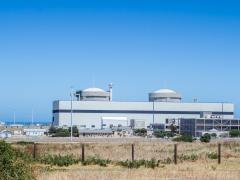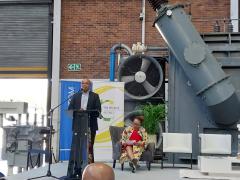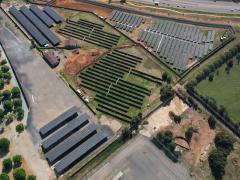As South Africa gears up for Phase 2 of its carbon tax regime in 2026, concerns are mounting about the private sector’s readiness to comply with stricter emissions targets, says Matthew Cruise, Business Development Executive at IMPOWER.
The revised carbon tax regime framework will substantially raise the financial stakes for high-emitting industries and could serve as a pivotal catalyst for clean energy investment, provided the necessary structural enablers are in place.
Under the revised structure, the carbon tax rate will rise from R308 per tonne of CO₂ equivalent in 2026 to R462 by 2030. Simultaneously, the basic tax-free allowance will decline from 60% to 50% by 2026 with a further annual reduction of 2,5% through to 2030.
In this landscape, investments in energy efficiency, renewables and carbon offset projects will no longer be optional. They will be essential for controlling costs and maintaining competitiveness.
Despite the looming deadline, many companies remain in the early stages of understanding the implications and preparing for the new tax framework. Business leaders should take a proactive approach to carbon management by undertaking emission audits, crafting reduction strategies and identifying offset opportunities. Early engagement is essential – not only to avoid financial penalties but also to align with South Africa’s national climate objectives.
Carbon tax reform could drive renewable uptake
The revised carbon tax incentivises a shift towards low-carbon technologies and enhances the financial appeal of investing in renewable energy. However, the success of this transition will depend on enabling conditions.
Supportive infrastructure, regulatory clarity and access to finance are non-negotiables. If these are in place, we can expect an acceleration in renewable energy investments. Without them, it risks becoming a punitive measure that lacks viable alternatives.
Property developers and commercial or industrial property owners are advised to begin by evaluating the carbon footprint of their assets and operations ahead of the regulatory changes. By aligning their energy strategies with their carbon mitigation objectives, through energy-efficient design, solar integration and smart building systems, they can significantly reduce emissions.
It is important to set clear emission-reduction targets, invest in low-carbon technologies, incorporate renewables into the energy mix, and maintain rigorous monitoring and reporting mechanisms. Active participation in carbon markets will also be crucial.
What gives me tremendous hope is how decisively the private sector has responded to the energy crisis. In just two and a half years, businesses and households have installed over 6 000 MW of solar capacity, directly offsetting about six stages of load shedding.













